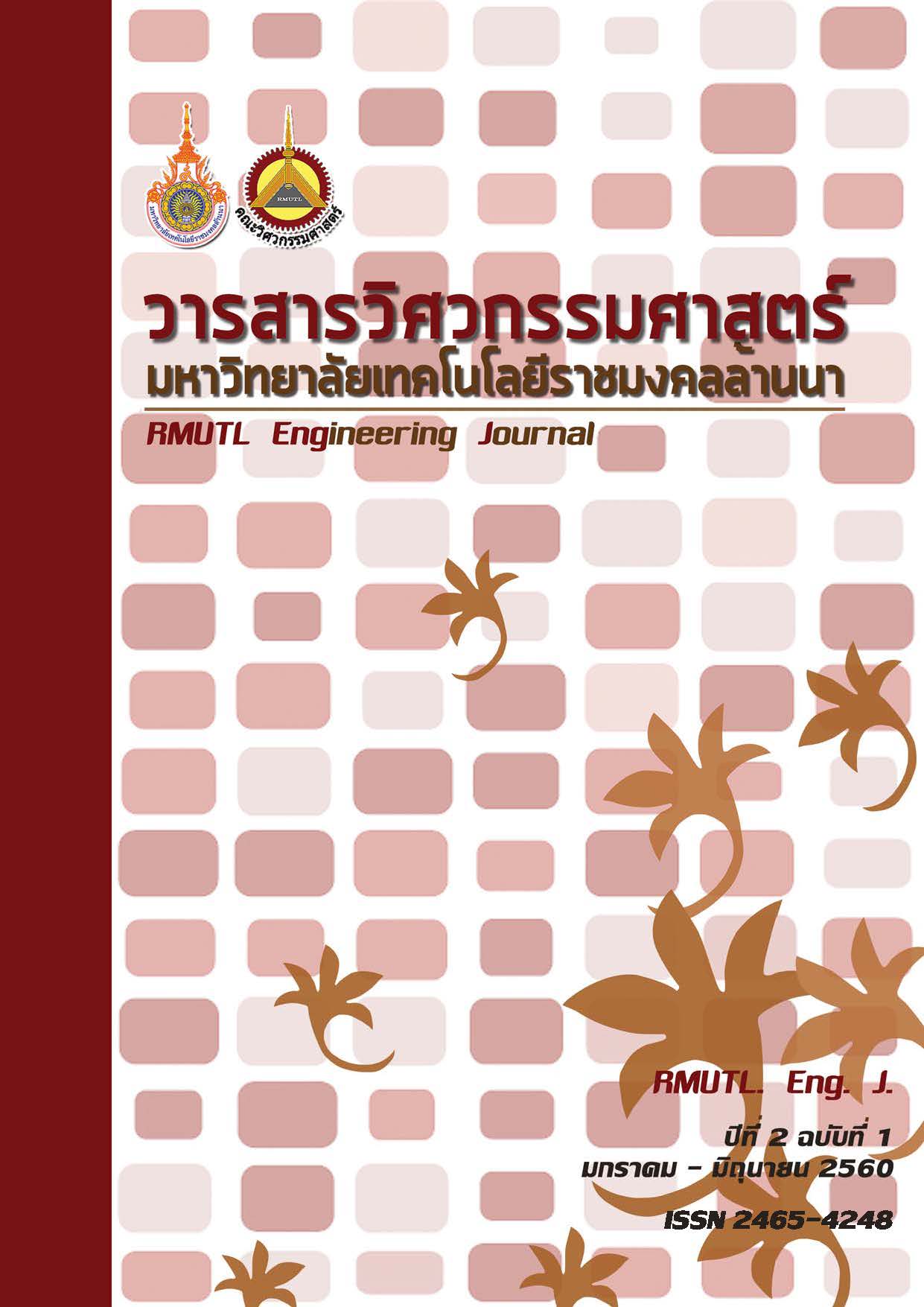The Effects of Pressure and Temperature on Cold-Pressed Sesame-Oil Recovery Yield
DOI:
https://doi.org/10.14456/rmutlengj.2017.4Keywords:
sesame, sesame oil,, cold pressed.Abstract
The cold pressed sesame-oil process is able to preserve all the valuable vitamins and nutrients available in sesame seeds. Several studies have been carried out with a screw press under-20-MPa of pressure and its effects on oil extraction have been researched. The aim of this research was to investigate the effects of the various pressures (ranging from 20-60 MPa) and temperatures (ranging from 40-60oC) on sesame oil yield recovery by using this mechanical pressing process. The pressing time was set at 10 minutes for all experimental conditions. It was found that the highest value of oil yield recovery was at the 60 MPa and 40oC. When the multiple regression analysis was carried out, the results showed that the pressure, temperature and interaction between these two factors had significant effects on sesame oil recovery yield.
References
2. Rabrenovic, BB., Dimic, EB., Novakovic, MM., Tesevic, VV., and Basic, ZN. (2014). The most important bioactive components of cold pressed oil from different pumpkin (Cucurbitapeop L) seed. LWT Food Sci Technol, vol.55, pp. 521-527.
3. Rombaut, N., Savoire, R., Thomasset, B., Castello, J., Hecke, EV., and Lanoiselle, JL. (2015). Optimization of oil yield and oil total phenolic content during grape seed cold screw pressing. Ind Crops Prod, Vol.63, pp. 26-33.
4. Chotivisarut, N., Kumwan, R., and Geesai, S. (2006). Sesame oil cold extraction machine. Rajamangala Univ Tech Lanna. Research Report, Thailand
5. Techarungpaisan, P. and Pongrat, A. (2006). Sesame oil separator. KKU Eng J, vol.33(5), pp. 565-576. Thai.
6. Ajibola, O., Owolarafe, K., Fasinaand, O., and Adeeko, A. (1992). Expression of oil from sesame seeds. Can Agr Eng, vol. 35(1), pp. 83-88.
7. Santoso, H. and Iryanto, M. (2014). Effects of temperature, pressure, preheating time and pressing time on rubber seed oil extraction using hydraulic press. Procedia Chem, vol.9, pp.248-256.
8. Willems, P., Kuipers, NJM. and Haan, AB. (2008) Hydraulic pressing of oilseeds: experiment determination and modeling of yield and pressing rates. J Food Eng, vol.89, pp. 8-16.
9. Subroto, E., Manurung, R., Heeres, J., and Broekhuis, A. (2015). Optimization of mechanical oil extraction from Jatropha curcas L kernel using response surface method. Ind Crops Prod, vol.63, pp.294-302.










